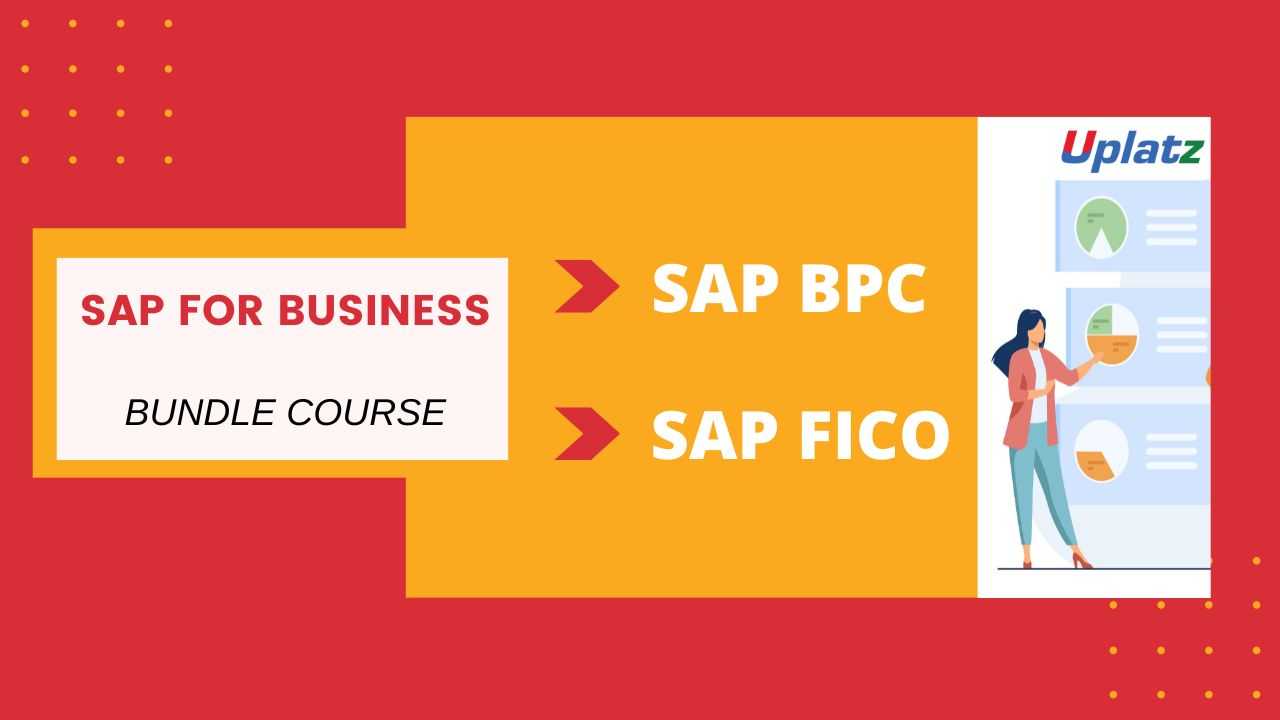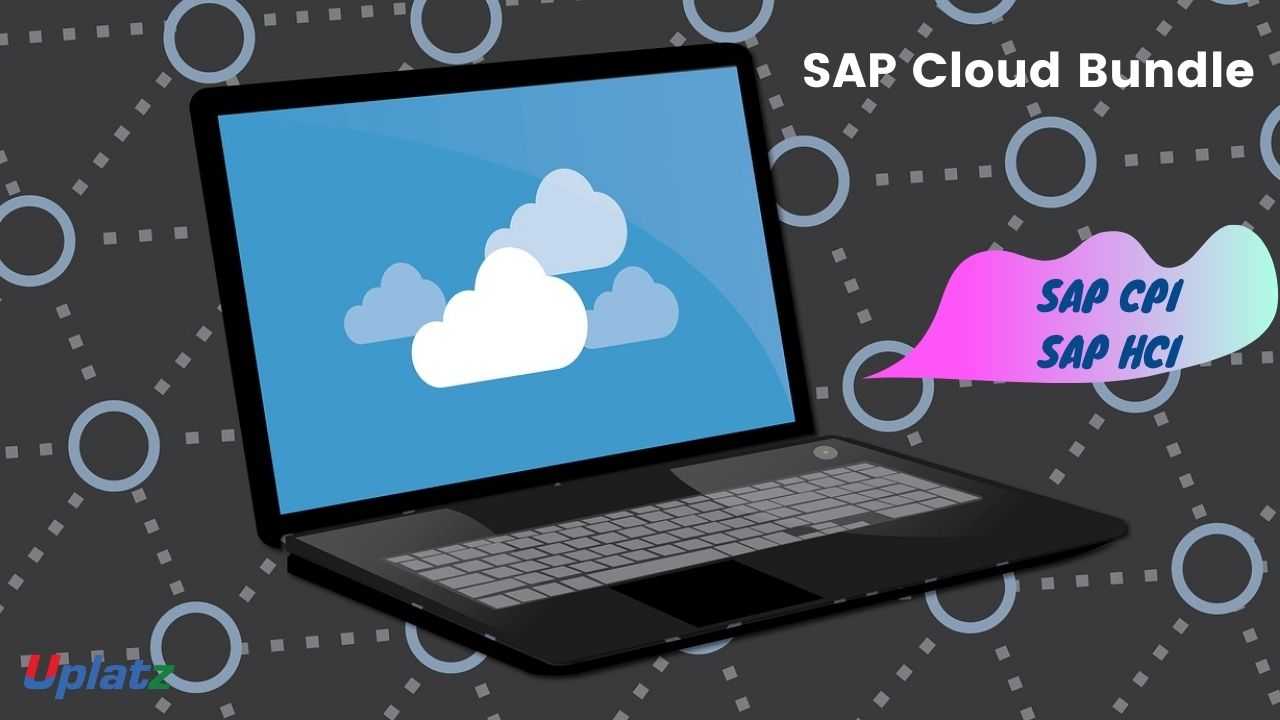SAP Cutover Management
Learn about a smooth deployment of SAP project or transition from legacy to SAP system. Migration of SAP data in complex, global, release SAP programsPreview SAP Cutover Management course
View Course Curriculum Price Match Guarantee Full Lifetime Access Access on any Device Technical Support Secure Checkout Course Completion Certificate 32% Started a new career
BUY THIS COURSE (GBP 29)
32% Started a new career
BUY THIS COURSE (GBP 29)
-
 25% Got a pay increase and promotion
25% Got a pay increase and promotion
Students also bought -
-

- SAP Data Services (BODS)
- 25 Hours
- GBP 29
- 216 Learners
-

- Bundle Course - SAP for Business (BPC and FICO)
- 60 Hours
- GBP 49
- 323 Learners
-

- Bundle Course - SAP Cloud (CPI - HCI)
- 50 Hours
- GBP 49
- 165 Learners

SAP Cutover Activities are the activities and tasks that are performed before go-live of any SAP project implementation or migration. This is the most critical part of the project delivery since the success of SAP implementation is hugely dependent on the swift identification and execution of cutover activites.
Planning/execution of cutover approach include:
1) develop/maintain detailed cutover plan ensure alignment with project / programme plan milestones
2) develop/maintain local resource plan for the cutover activity
3) support the Site Lead in requests for site-based resource eg. fr reconciliation activity
3) ensure that Site and Programme resource levels / quality are appropriate to support delivery of the cutover plan
4) reporting to the deployment manager / site lead where variances are identified
5) track progress against detailed cutover plan ensuring that the site team provide timely updates to enable actionable status reporting to the programme and site steering group
6) ensure the site team and the SAP Site Lead / cutover coordinators understand activities to be performed by the site using One Step Ahead workshops for cutover etc.
7) arranging for additional communication / education upon the cutover approach as required
8) Ensure that risks / issues and associated mitigation plans are recorded and tracked in the project RAID log associated with cutover activity.
Cut-over strategy is the essentially a document created to maintain the key strategies, the do's/dont's and the best practices that we can follow for a smooth deployment of SAP project or transition from legacy to SAP system.
Uplatz provides this SAP Cutover Management training with self-paced videos.
SAP Cutover activities management include cutover readiness i.e. project team assesses what level the organization is for the cutover/transition and to what extent the support organization is operational and ready for cutover. This task also includes checking that proper governance of master data quality is defined.
Once the preparation is done, the project team will deliver the preliminary cutover plan task to document the strategy, scope, and timelines for moving "as-is" solutions to "to-be".
SAP Cutover Manager/Consultant has several responsibilities-
a)Demonstrable experience with migrations of SAP data in complex, global, release-deployed SAP programmes
b)Ability to define and execute multiple detailed activity plans simultaneously, maintaining an ability to articulate progress and status clearly to key stakeholders
c)Natural ability to coordinate and facilitate diverse teams of different skill sets, backgrounds, cultures and languages
d)Good understanding of key SAP functional process streams as well as Project Management skills
e)Solid understanding of the SAP Data Model and most commonly used Master- and Transactional Data elements
f)Ability to conduct and facilitate workshops with business representatives, management and executive, team member resources, and external 3rd party groups
g)Problem solving skills that use techniques to identify the root cause of the issue and then ability to clearly communicate (verbal/orally) this position.
Course/Topic - SAP Cutover Management - all lectures
-
In this first video lecture on Cutover Management, you will learn what are the different Cutover activities one needs to follow while working with the SAP Cutover Management module. Here, you will be able to understand an overview on the Cutover Planning, Cutover Conversion Planning, Final Cutover Checklist, Cutover contacts and the Cutover Issues Log.
-
In this video tutorial, you will be able to understand the different activities related to the FICO Cutover Management such as Master Data Uploading, Transaction Data Uploading and Controlling Area related upload along with a theoretical overview on what exactly is Cutover Management.
-
In this video, you will be able to learn some of the key concepts associated with the SAP Production Planning module, the relevant elements associated with the PP like Bill of Material (BOM), Routing and Work Centres. Also, you will understand what is a Short Duration Production Order and activities associated with a Long Duration Production Order. It will be further proceeded with the Warehouse Management and what are the configuration activities associated with the Warehouse Management module.
-
In this video tutorial, you will learn about the different cutover activities associated with the SAP Sales and Distribution (SD) and SAP Material Management (MM), which are two of the biggest modules in the whole of the SAP system. Further, it will be proceeded with a demonstration on how to work on the SAP MM module in a system.
-
In this video, you will learn on how to configure the Development System in the Cutover Management by taking the base configuration. Also, you will be presented with the configuration demonstration on the Quality, Legacy and the Production system and the steps involved in this configuration process.
1) Technical/Infrastructure Build.
2) Build Production Environment.
3) Connectivity to Middleware, Bolt-ons, Legacy environments.
4) Functional Build.
5) Apply all Transports (configuration, security, deployment)
6) Perform manual steps.
7) Learn how to use important SAP Cutover plan templates
8) Become a successful SAP Project Manager
9) Become an SAP Consultant
10)Prepare for SAP Cutover Certification exam
11) Prepare for SAP Data Migration and Cutover Manager interviews
1) Freezing and releasing of legacy data
2) Exportation of legacy data into the conversion database input layer
3) Understanding of Master and Transaction Data
4) Writing the Data Migration Load programs through LSMW
5) Transposition of legacy data into the conversion database
6) Reconciliation of the production data to the Conversion Database
7) Copy converted data to different SAP System Landscapes
8) Manual conversion of non-converted accounts
This SAP Cut Over Management training course is designed for exploring the cutover activities and strategies.
In SAP CutOver Management Course module, the participants can learn to apply the data migration plans and strategies. In the SAP CutOver Management course, the participants will learn about cutover series of tasks involved within an organization. This seems to be an essential learning for all SAP Cutover module users. The Cutover plan is executed only when the system is ready for the productive usage of the go-live date. The Participants can demonstrate entire concepts and implementation SAP cut over activities
The SAP Cutover Management tutorial helps the participants to learn the Cutover processes to improve the development and production environment. SAP Cutover Management course offers complete information about Cutover activities and components thus making the participant an expert SAP CutOver Consultant.
Uplatz online training guarantees the participants to successfully go through the SAP CutOver Managementtraining course. Uplatz provides appropriate teaching and expertise training to equip the participants for implementing the learnt concepts in an organization.
Uplatz Course Completion Certificate will be awarded upon the completion of the SAP CutOver Management course training.
The SAP CutOver Consultant draws an average salary of $83,974 per year depending on the knowledge and hands-on experience. The SAP Cutover Consultant job roles are in high demand and make a rewarding career.
The SAP Cutover Consultants are recognized across the globe. The increased usage of the SAP Cutover strategies in many companieshelp the participants to find a job opportunity easily. The leading companies hire SAP Cutover Consultant considering the skill of managing the relationship with many customers in an organization. The Learners earn most beneficial SAP Cut over managementcompletion certification through our expert training and course curriculum.
The SAP Cut over management course is targeted to those participants who are from Sap migration and business consulting background and excel as SAP Cutover consultant
The following are the job titles:
• SAP Cutover Expert
• SAP Cutover Manager
• SAP Migration Consultant
• SAP Cutover Associate
• SAP Cutover Consultant
The SAP Cutover Management online course provides you with an opportunity to explore career opportunities as SAP Cutover Consultant.
Q1- What is SAP Cutover Management, and why is it important?
Ans-SAP Cutover Management refers to the process of transitioning from a legacy system or previous version of SAP to a new SAP system or upgrade. This involves the planning, execution, and monitoring of activities required to ensure a smooth and successful transition with minimal disruption to business operations. It is crucial because it ensures-
a).Seamless Transition- Minimizes business disruption by carefully managing the switch from the old system to the new one.
b).Data Integrity- Ensures that data is accurately and completely transferred, reducing the risk of data loss or corruption.
c).Business Continuity- Maintains operational continuity and service availability during the cutover process.
d).Stakeholder Confidence- Builds trust with stakeholders by demonstrating effective planning and execution of the transition.
Q2- What are the key phases of a cutover plan in an SAP implementation project?
Ans- The key phases of a cutover plan typically include-
a).Preparation- Involves detailed planning, defining cutover objectives, identifying key milestones, and preparing necessary resources.
b).Data Migration- Includes activities such as data extraction, transformation, and loading (ETL), data validation, and reconciliation.
c).Testing- Ensures that the new system is tested thoroughly to validate that it meets requirements and functions correctly.
d).Execution- The actual transition phase where the cutover activities are executed, including system shutdown, data migration, and system startup.
e).Post-Cutover Support- Involves monitoring the new system’s performance, addressing any issues, and providing support to users as they adapt to the new system.
f).Review and Optimization- Analyzes the cutover process to identify lessons learned, optimize procedures, and address any residual issues.
Q3- How do you approach data migration during the cutover process?
Ans-Data migration during cutover involves several key steps-
a).Data Assessment- Review the data in the legacy system to understand its quality, completeness, and structure.
b).Mapping and Transformation- Define how data will be mapped from the legacy system to the new SAP system and identify any necessary transformations.
c).Data Extraction- Extract data from the legacy system in a format suitable for migration.
d).Data Transformation- Convert data into the format required by the SAP system, addressing any data quality issues.
e).Data Loading- Load the transformed data into the SAP system, ensuring that it aligns with the new system’s requirements.
f).Data Validation- Verify that data has been migrated accurately and completely, and perform reconciliation to ensure consistency.
g).Backup and Rollback Plans- Have contingency plans in place to handle any issues that arise during data migration.
Q4- What are some common challenges faced during SAP cutover, and how do you mitigate them?
Ans: Common challenges include-
a).Data Quality Issues- Address by performing thorough data cleansing and validation before migration.
b).System Downtime- Minimize by scheduling cutover during off-peak hours and ensuring adequate testing to avoid extended outages.
c).Unforeseen Errors- Mitigate by having a detailed cutover plan, thorough testing, and robust backup and rollback procedures.
d).User Training and Adaptation- Provide comprehensive training and support to users to facilitate a smooth transition to the new system.
e).Integration Issues- Ensure thorough testing of system integrations to identify and resolve any compatibility issues before cutover.
Q5- How do you ensure minimal disruption to business operations during the cutover process?
Ans- To ensure minimal disruption-
a).Detailed Planning- Develop a comprehensive cutover plan with clearly defined activities, timelines, and responsibilities.
b).Stakeholder Communication- Keep all stakeholders informed about the cutover schedule, expected impact, and any required actions.
c).Schedule During Off-Peak Hours- Perform cutover activities during periods of low business activity to minimize impact.
d).Prepare Contingency Plans- Have backup and rollback plans in place to quickly address any issues that arise.
e).Conduct Thorough Testing- Ensure that all systems are thoroughly tested before cutover to identify and address potential issues.
f).Monitor and Support- Provide real-time monitoring and support during the cutover to address any issues promptly.
Q6- What is the role of a Cutover Manager in an SAP implementation project?
A- The Cutover Manager is responsible for overseeing and coordinating the cutover activities, ensuring a smooth transition from the old system to the new SAP system. Their roles include:
a).Planning and Coordination- Developing and managing the cutover plan, coordinating activities between different teams, and ensuring that all tasks are completed as scheduled.
b).Resource Management- Allocating resources effectively and ensuring that all necessary tools and personnel are available.
c).Communication- Serving as the primary point of contact for all cutover-related communications, keeping stakeholders informed, and addressing any concerns.
d).Issue Management- Identifying potential issues and risks, implementing mitigation strategies, and managing any problems that arise during the cutover.
e).Post-Cutover Support- Overseeing the post-cutover phase, including system monitoring, issue resolution, and support for users.
Q7: How do you handle testing during the cutover phase to ensure system readiness?
A: Testing during the cutover phase involves-
a).Pre-Cutover Testing- Conduct thorough testing of the new system before the actual cutover, including functional, integration, and performance testing.
b).Cutover Testing- Perform tests during the cutover phase to validate that all data has been migrated correctly and that the system operates as expected.
c).User Acceptance Testing (UAT)- Involve end-users in testing to ensure that the new system meets their needs and expectations.
d).Issue Tracking and Resolution- Track and address any issues identified during testing to ensure they are resolved before the system goes live.
e).Validation and Verification- Verify that all cutover activities have been completed successfully and validate that the system is fully operational.
Q7: Can you explain the difference between a “big bang” and a “phased” cutover approach?
A: The "big bang" and "phased" approaches are two different strategies for cutover-
a).Big Bang Cutover- This approach involves transitioning to the new system all at once, with a single, comprehensive cutover event. It requires extensive planning and preparation, as it involves shutting down the old system and switching to the new one in a single operation. While this approach can minimize parallel system maintenance, it carries higher risk and can result in more significant disruptions if issues arise.
b).Phased Cutover- This approach involves transitioning to the new system in stages, gradually replacing components or modules of the old system with the new system over time. This method allows for a more controlled and less risky transition, as each phase can be tested and validated independently. It may reduce disruptions but can require more complex coordination and extended periods of parallel system operation.
Q8: What steps do you take to ensure successful post-cutover support?
A: To ensure successful post-cutover support:
a).Establish a Support Team- Set up a dedicated team to address any issues that arise after the cutover.
b).Monitor System Performance- Continuously monitor the system for performance issues, errors, and user feedback.
c).Provide User Support- Offer training and support to users to help them adapt to the new system and address any questions or issues.
d).Implement Issue Resolution Processes- Have clear processes in place for tracking and resolving issues that arise post-cutover.
e).Conduct a Post-Cutover Review- Review the cutover process to identify any lessons learned and make improvements for future projects.
Q8: How do you measure the success of a cutover process?
A: Success can be measured using several criteria-
a).System Stability- Evaluate the system’s stability and performance to ensure it meets operational standards.
b).Data Accuracy- Verify that data has been migrated accurately and completely.
c).User Adoption- Assess user satisfaction and adoption rates to ensure users are successfully utilizing the new system.
d).Operational Continuity- Measure the impact on business operations to confirm that there were minimal disruptions during the cutover.
e).Issue Resolution- Review how effectively and quickly any issues were resolved during and after the cutover.









